In this Article
Toggle
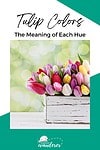
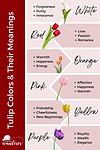
With their teacup-shaped blooms in a stunning array of colors atop elegant stems, tulips are one of the most beautiful and recognizable flowers in the world. But what do the flower colors symbolize? This guide to tulip colors has answers!
For centuries, tulips have brought beauty to just about every corner of the world. And when you wrap them into bouquets or create a tulip garden in your yard, they are a symbol of a deep and perfect love, which makes them a perfect flower to gift to anyone you cherish, whether it’s your partner or your kids, your parents or your siblings, your best friend or yourself.

To help offset the costs of running EverydayWanderer.com, you’ll find affiliate links lightly sprinkled throughout the site. If you choose to make a purchase via one of these links, there’s no additional cost to you, but I’ll earn a teeny tiny commission. You can read all of the legal blah blah blah (as my little niece says) on the full disclosure page.
What is a Tulip?
A tulip is a perennial bulb that typically flowers in the spring. Tulips have a single, cup-shaped bloom atop a long, dainty stem. The word “tulip” is derived from the Turkish word “tülbend,” which means “turban” or “gauze” – a fitting name, given the flower’s shape. These beautiful blooms come in a rainbow of colors, including red, pink, orange, yellow, purple, and even black – but never blue.
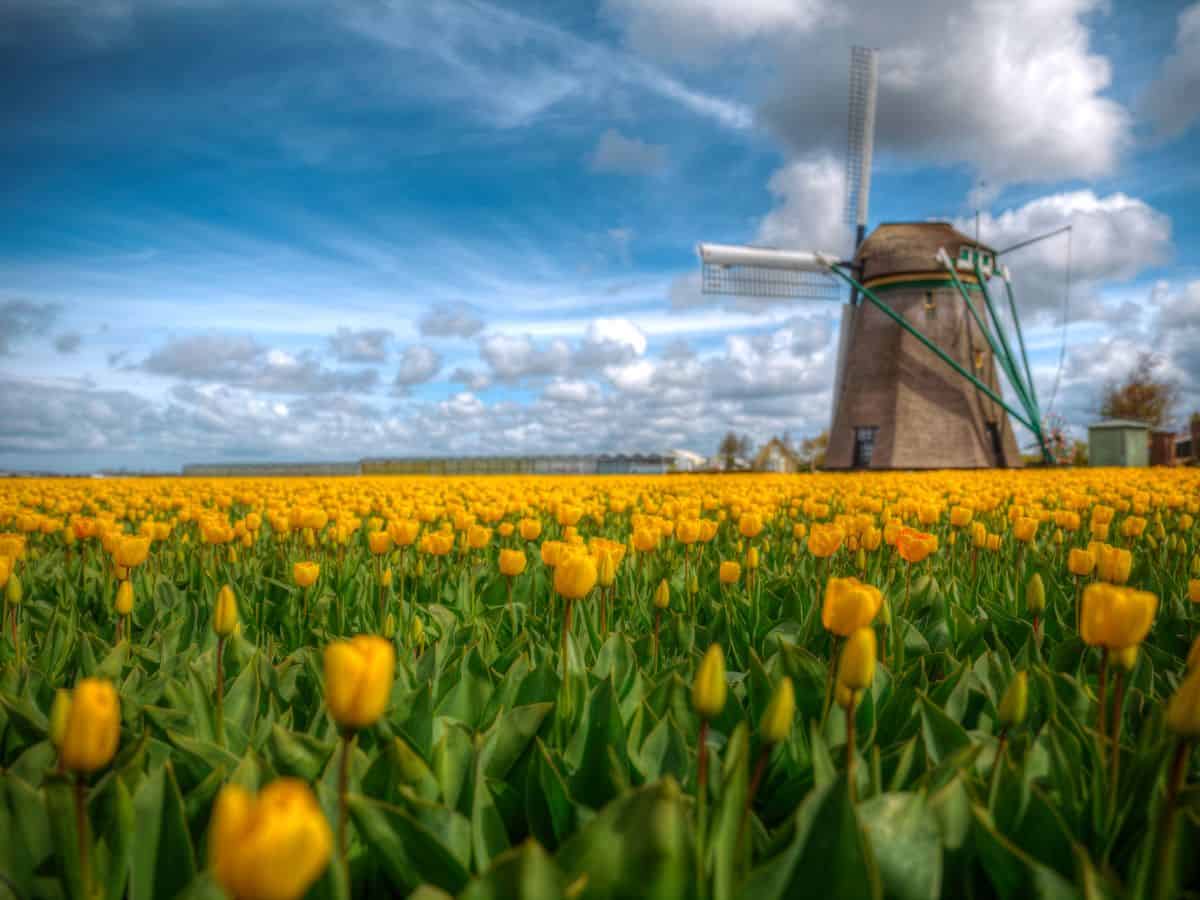
History of Tulips
Although you may associate tulips with the Netherlands, a small coastal country in Northern Europe, they are actually native to Central Asia where the Ottoman Empire (the Turks) first cultivated them around the 10th century. Today, you can still find wild tulips growing in parts of Turkey, Iran, and Afghanistan.
In the 16th century, tulips made their way to Europe where a French botanist, Carolus Clusius, planted the first bulbs in Leiden, Netherlands. As a respected scientist known for developing new cultivated plants, Clusius was exclusively interested in tulips in a scientific sense. Therefore, he refused to sell or give away any of his bulbs. One group of interested (but frustrated) buyers paid an unannounced visit to Clusius’s garden and stole a part of his collection. And with that act of thievery, the Dutch tulip industry was born.
The Popularity of Tulips Today
Tulips continue to be a beloved flower worldwide, with the Netherlands leading the way in terms of tulip production. Each year, the country produces billions of tulip bulbs, which are exported to nearly every corner of the globe. Keukenhof, a world-famous spring garden located in Lisse, Netherlands, features more than seven million spring-flowering bulbs. The garden is open to the public for just a few weeks each year, typically from late March to mid-May, when it draws visitors from around the world to witness the stunning display of tulips, hyacinths, and other spring flowers.
In addition to their incredible beauty, tulips are also known for their versatility. They are widely planted in gardens and featured in cut flower bouquets. Tulips are a symbol of love, friendship, and the arrival of spring, making them a popular choice for flower enthusiasts everywhere.
Tulip Color Meanings
Whether you’re planting them in your garden or using them in a floral arrangement, tulips are sure to bring happiness and elegant beauty to any setting. There are many types of tulips, from the classic medium-sized bloom to the ruffle-edged parrot. And with their wide variety of colors – each with its own meaning – there’s a tulip that’s perfect for every taste and occasion. Here’s your secret decoder ring to the language of flowers.

White Tulips
White tulips symbolize forgiveness, purity, and innocence, making them a popular choice for weddings and other special occasions. The Maureen is a classic long-stemmed tulip variety while the Calgary has similarly beautiful blooms on a much shorter stem. And the Mondial tulip is a midseason bloomer with peony-like double blossoms, creating an abundance of petals.
Sage Advice: For those who love what the color white symbolizes, here’s how to pull off an all white capsule wardrobe.

Red Tulips
Red tulips are synonymous with love, passion, and romance. These fiery blooms are often given as a symbol of deep affection or to express admiration for someone. In a garden, red tulips demand attention, so use varieties like the Apeldoorn and the Red Emperor as a focal point.

Pink Tulips
More delicate than the flame-colored petals of red tulips, pink tulips symbolize affection (rather than passionate love). They are also a symbol of happiness and warmth, which makes them a popular choice for occasions like Mother’s Day and Galentine’s Day. Pink tulips can range in color from a light blush to a rich magenta. Some well-known pink tulip varieties include the Angelique, a delicate, double-flowered tulip with pale pink petals, and the Menton, which features elegant, long-stemmed, rosy pink blooms.
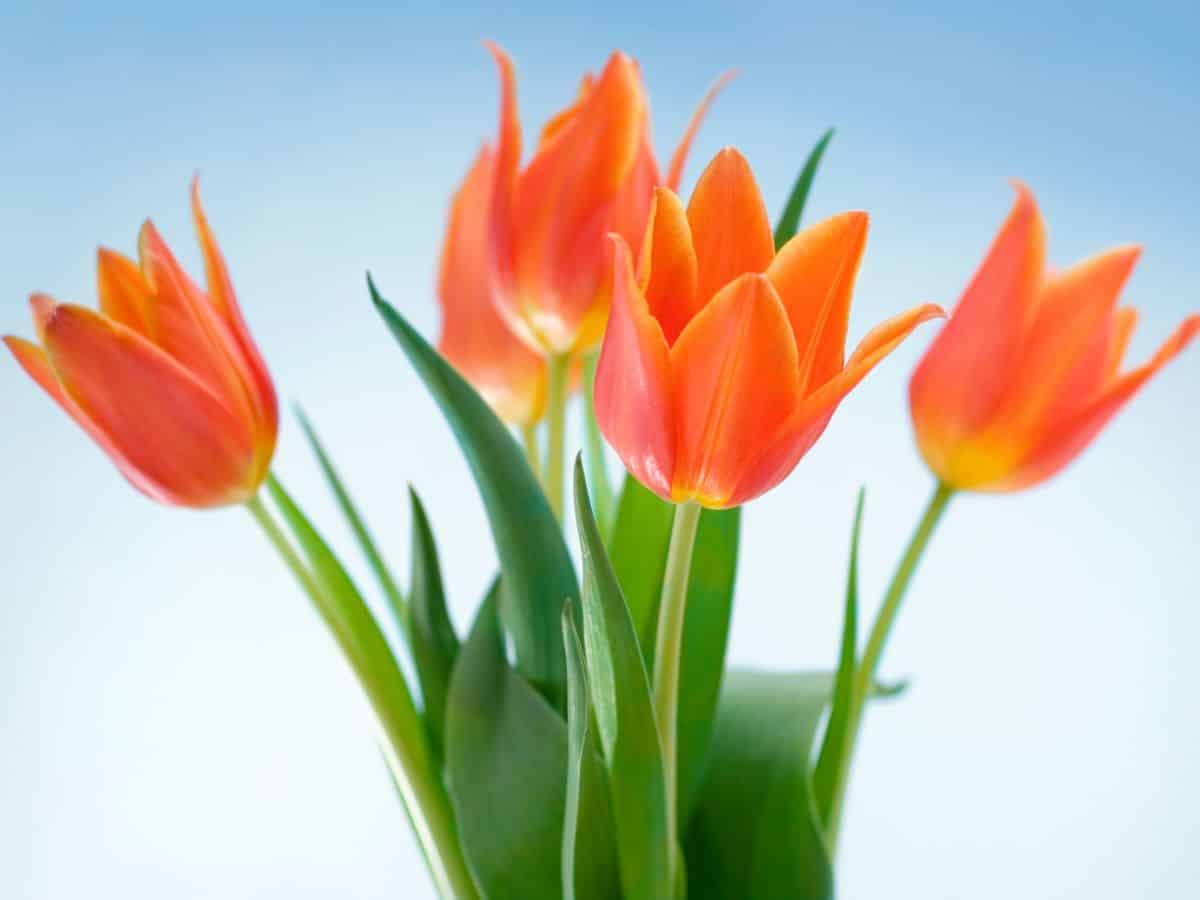
Orange Tulips
Orange tulips exude warmth, happiness, and energy. They are a delightful addition to any garden or floral arrangement, bringing a pop of color and a sense of enthusiasm. Some popular orange tulip varieties include the Princess Irene, known for its unique combination of soft orange petals flushed with a warm purple, and the Ballerina, a long, lean, lily-shaped tulip with graceful, curved petals.

Yellow Tulips
Yellow tulips symbolize friendship, cheerfulness, and new beginnings. These beautiful yellow flowers are often used to celebrate the arrival of spring or to brighten someone’s day. Yellow tulips range from soft buttery yellow to a rich golden color. Well-loved yellow tulip varieties include the Golden Apeldoorn, which features huge blooms, and the Yellow Flight, a bright, late bloomer that does well in landscaped areas that experience high winds.

Green Tulips
By offering a hint of the unexpected, green tulips are a unique and intriguing addition to any floral arrangement or garden. Often seen as a symbol of renewal, growth, and good fortune, green tulips can create a sense of harmony and balance. Some popular green tulip varieties include the Spring Green, an extraordinary tulip with green stripes emanating from the cup that blend into cream-colored petals, and the Green Wave, a parrot tulip with green and pink fringed, ruffled petals.

Blue Tulips
Listing the common meanings of tulip colors in a general ROYGBIV order to match the rainbow, blue tulips would fall here. However, there are no true blue tulips! But it’s not for a lack of trying. For centuries, bulb growers have tried to cultivate blue flowers, but the best they’ve been able to do is create purple tulips that almost look blue.
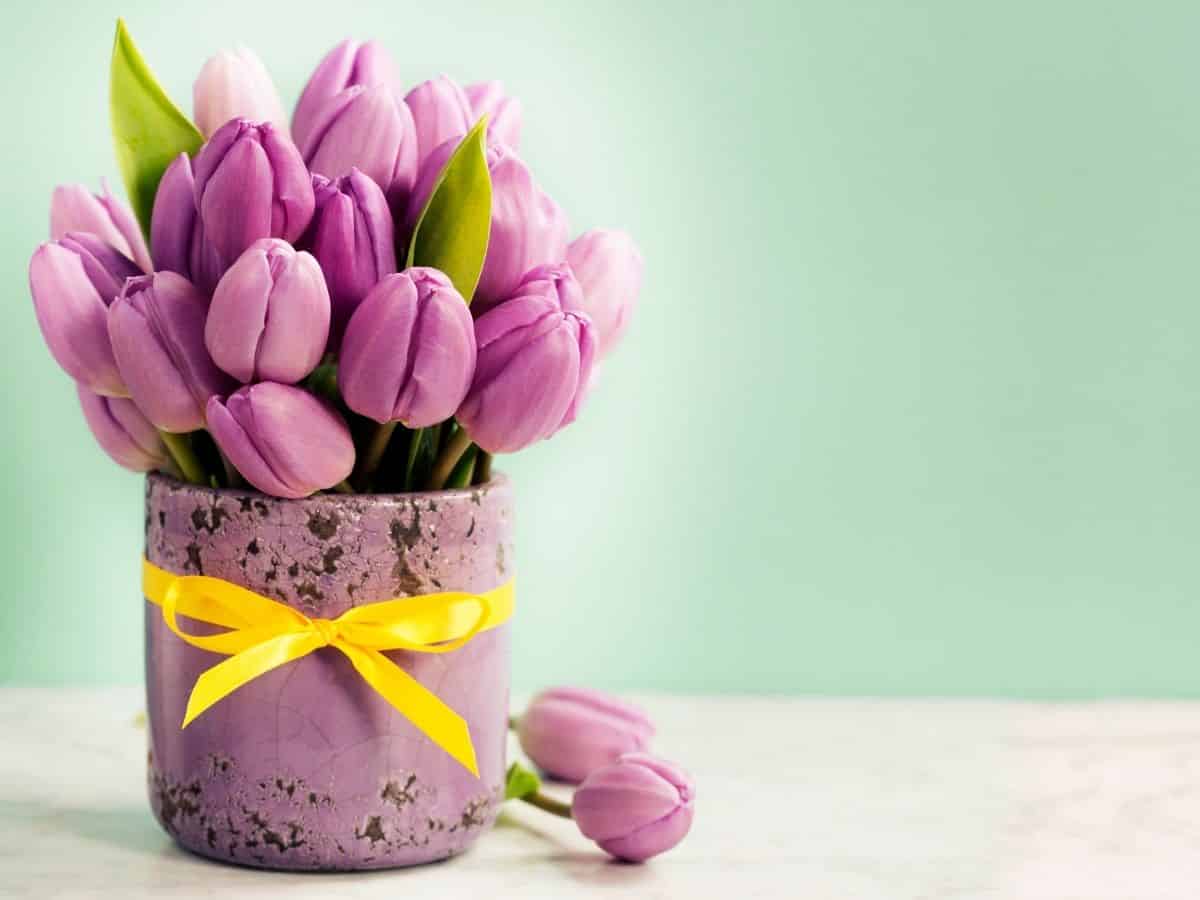
Purple Tulips
Purple tulips are associated with royalty, wealth, and elegance. They can range from a pale lilac to a deep plum, helping make a bold statement in any garden or floral arrangement. Speaking of nobility, two of my favorite purple tulip varieties are both princely – the Candy Prince, with beautiful lavender petals, and Purple Prince, with rich violet blooms.
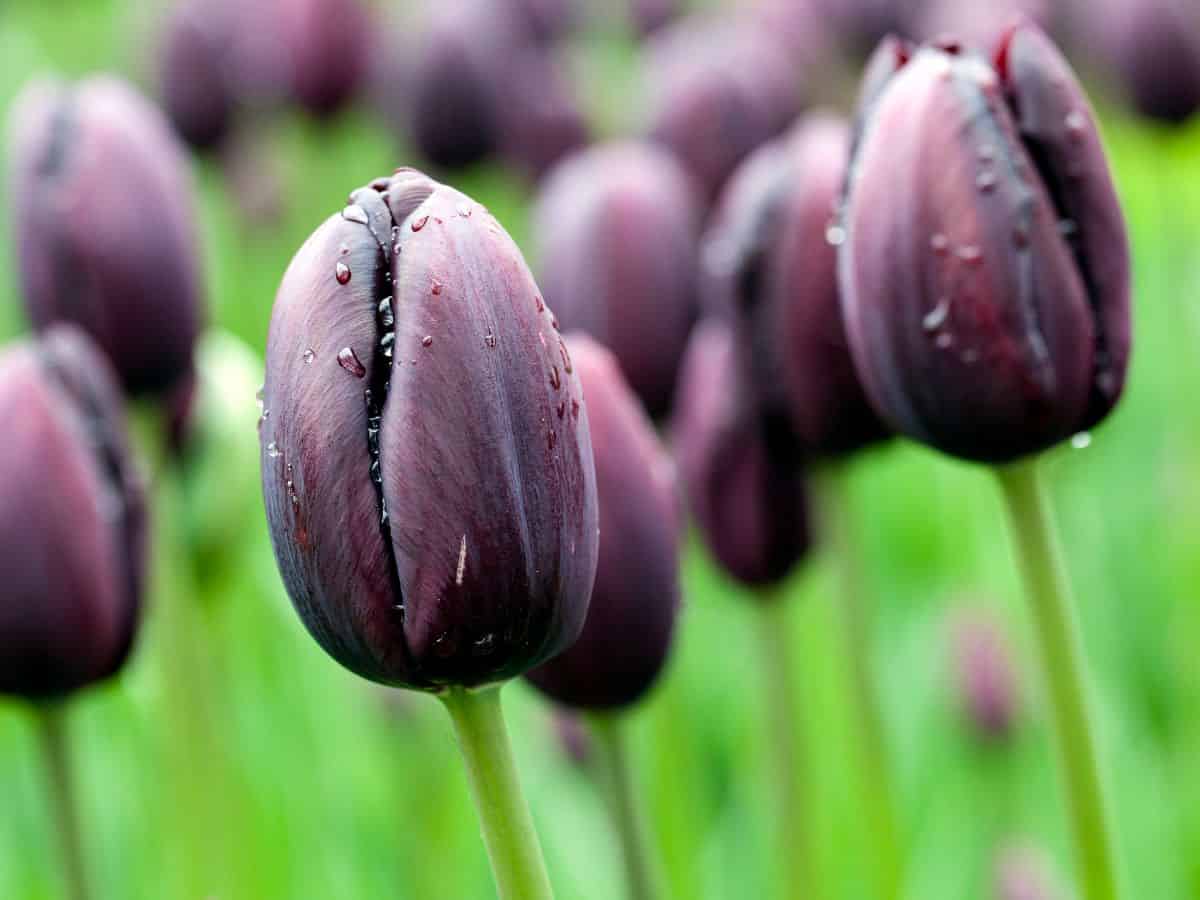
Black Tulips
Purple tulips don’t just masquerade as blue blooms, they can also moonlight as black tulips. That’s right, black tulips are not truly black. Rather they are a deep, dark maroon or chocolate brown and purple color that appears black in certain lighting. These one-of-a-kind blooms are a symbol of power, strength, and sophistication. A popular “black” tulip is Cafe Noir, a late spring bloomer that is often an annual that needs to be replanted each season. Two varieties that look even darker to me are the Queen of the Night and Vincent van Gogh.

Striped Tulips
When a single colored bloom isn’t enough, consider striped tulips. These tulips are known for their streaked, or striped, multicolored petals that offer a unique and unexpected twist – associated with fascination and a sense of individuality. One of the most popular striped tulip varieties is the Rembrandt, named after the famous Dutch painter. There’s also the Carnaval de Rio, with rich, red flames climbing from the cup of creamy white petals.
Frequently Asked Questions about Tulip Colors
What color are tulips?
Although the most common tulip color is red, these beautiful bulbs come in a variety of colors, including pink, purple, yellow, orange, white, and even black. Some tulips have multi-colored petals, with vertical stripes rising from the cup of the flower. But there’s one color you’ll never see: blue tulips.
How many tulip colors of tulips are there?
Organized into 15 groups based on the flower type, blossom size, and blooming period, there are more than 3,000 registered varieties of tulips. So whether you want an iconic single bloom, a peony-like double bloom, a ruffle-edged parrot tulip, or another variety, you’re sure to find them in just about every color under the rainbow.
What is the most common tulip color?
Symbolizing love, passion, and romance, red is the most popular tulip color.
What is the rarest tulip color?
Despite centuries of trying to create one, there is no blue tulip. And many tulip varieties with “blue” in their name – like Blue Wow, Blue Diamond, and Blue Beauty – are all more periwinkle or purple than blue.
What colors of tulips go together?
Whether you are planting tulips in your garden or arranging a bouquet, you’ll want to be sure that the tulip colors you select – as well as the other plants in your garden or flower arrangement – pair well together. Here are a few suggestions:
- Embrace bold colors by pairing the primary colors of red and yellow tulips
- Select tulips in analogous colors (which means they are adjacent to each other on the color wheel), like yellows and oranges or pinks and purples
- Complementary colors that face each other across the color wheel, like purple and yellow or red and green, also look good together
- Or embrace a single color by taking a monochromatic approach and using different shades of the same color
What’s Your Favorite Tulip Color?
Do you prefer red tulips to white tulips? Are you a fan of striped tulips? Share your experiences in the comments section below.
Sage Scott
Thank you for sharing!

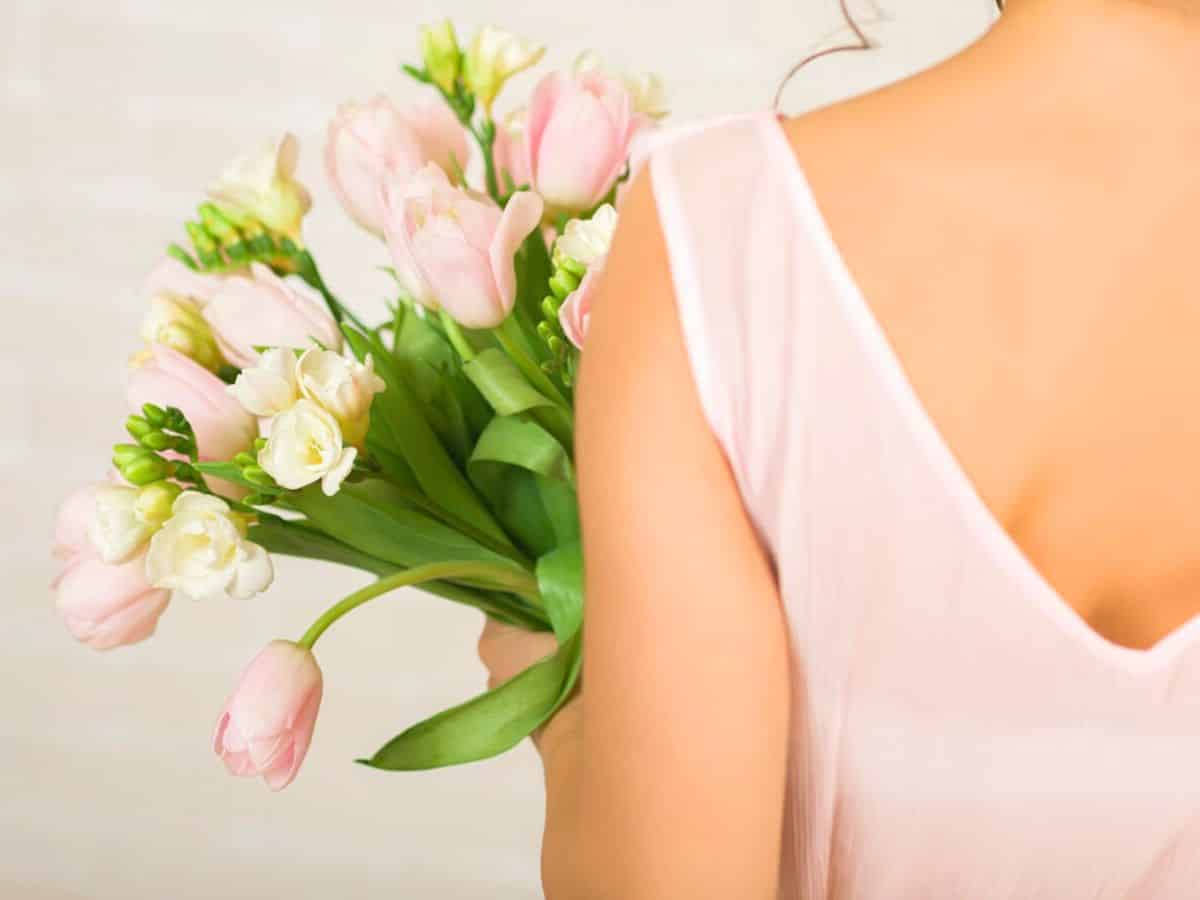


I’ve always adored tulips, but I had no idea they had such symbolic meanings. Keukenhof sounds like a floral paradise!
Keukenhof is breathtaking!